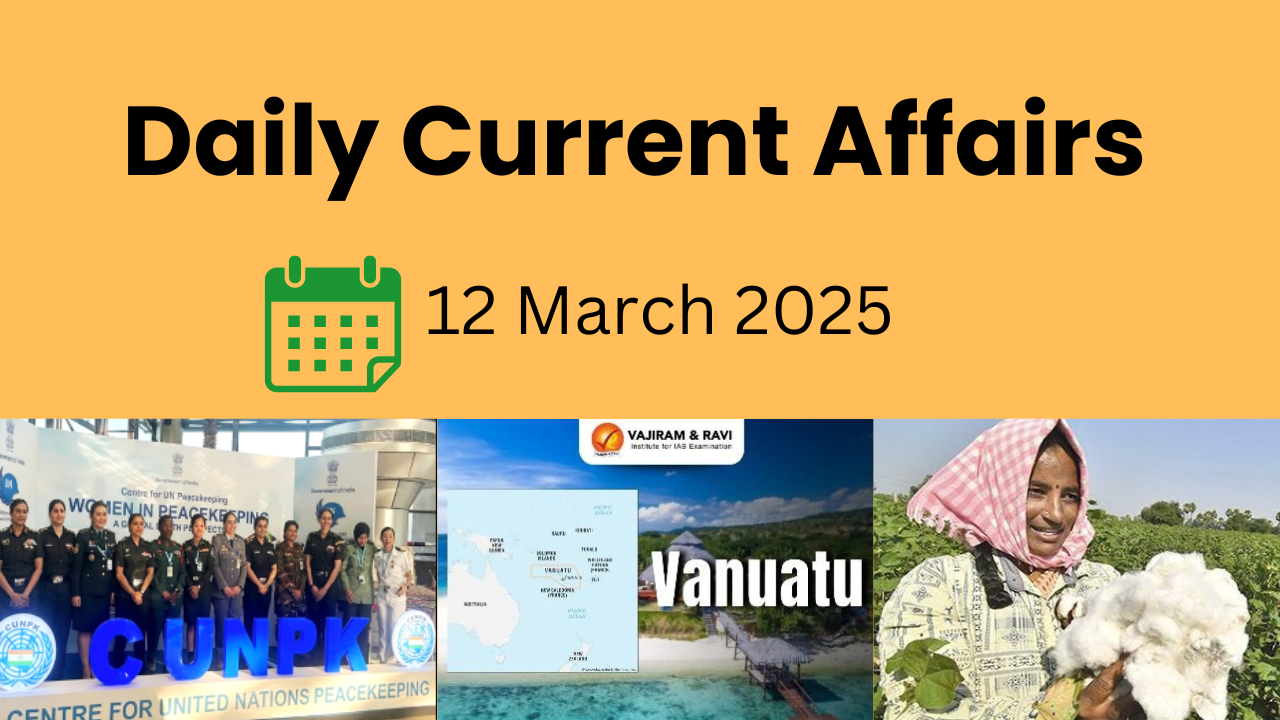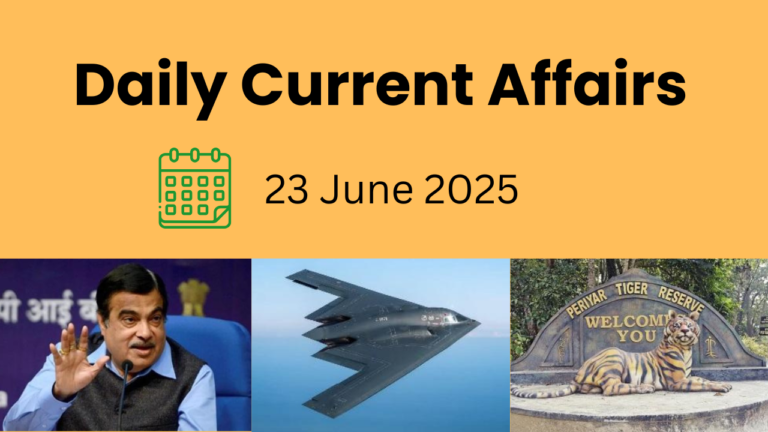1. Bridging the Gender Gap in India’s Higher Judiciary
Context: Despite significant progress in women’s representation across various fields, the judiciary continues to lag behind. This disparity reflects broader societal inequalities and systemic barriers that prevent women from advancing to the highest judicial positions.
Current State of Gender Representation:
According to the State of the Judiciary Report (2023):
- Women constitute only 14% of judges in High Courts.
- In the Supreme Court of India, only 4 out of 34 judges (9.3%) are women.
- Several High Courts, including those in Bihar, Chhattisgarh, Jharkhand, Manipur, Meghalaya, Odisha, Tripura, and Uttarakhand, have either no women judges or just one.
Global Trends in Women’s Representation in Judiciary:
- Worldwide, women make up just over 25% of judicial officers, with significant variation by region. In some areas, this figure is below 10%.
- OECD countries have shown more progress, with women comprising 54% of professional judges, thanks to greater inclusion in legal education and judicial careers.
- The Global Gender Gap Report by the World Economic Forum (WEF) highlights that countries like the United States, the United Kingdom, and Canada have made strides in appointing women to the judiciary, but challenges persist at higher levels.
Why Gender Diversity in the Judiciary Matters?
- Diversity of Thought: Women bring unique perspectives, enriching judicial decision-making.
- Gender-Sensitive Judgments: Cases related to sexual violence, workplace harassment, and family law benefit from a more inclusive judiciary.
- Public Trust: Greater representation enhances confidence in the judiciary, particularly among women litigants.
Factors Contributing to the Gender Gap:
1. Collegium System and Bias:
- The collegium system favors candidates from male-dominated social and professional circles.
- Implicit biases and lack of institutional support result in fewer women being considered for elevation.
2. Systemic Inequality:
- While many women enter the legal profession, fewer advance due to workplace discrimination, lack of mentorship, and societal expectations placing family responsibilities disproportionately on women.
3. Lack of Structural Support:
- Absence of gender-friendly policies, such as flexible work hours and safety measures, make it difficult for women to sustain long legal careers.
4. Limited Role Models and Representation:
- With fewer women in higher judicial positions, younger female lawyers lack inspiration and guidance to pursue judicial careers.
Recommendations for Bridging the Gap:
1. Judicial Appointment Reforms:
- The collegium system must adopt gender-sensitive policies to fairly consider women for judicial appointments.
- High Courts should actively recommend more women for elevation to the Supreme Court.
2. Mentorship and Leadership Development:
- Mentorship programs should be introduced to help female legal professionals navigate their careers.
- Senior judges must advocate for institutional gender parity.
3. Workplace Policy Changes:
- Implement family-friendly policies such as flexible work hours and better maternity leave provisions.
- Conduct gender-sensitization training for judicial officers.
4. Encouraging Women in Litigation:
- More women should be encouraged to take up litigation, a key pathway to judicial elevation.
- The government should introduce incentives and fellowships for female advocates pursuing higher judicial positions.
5. Role of Supreme Court and High Courts:
- The Chief Justice of India (CJI) and High Court Chief Justices must take proactive steps to ensure gender inclusivity.
- The judiciary should set diversity benchmarks and track progress.
Conclusion: A Call for Urgent Action
The gender gap in the higher judiciary mirrors broader societal inequalities and demands urgent action. By prioritizing transparency, mentorship, and policy reforms, India can work towards a judiciary that is not only more representative but also more just. Bridging this gap is essential to uphold the principles of equality and fairness enshrined in the Constitution.
2. India’s Enduring Legacy in UN Peacekeeping
Context: India has played a crucial role in UN peacekeeping operations, reinforcing its commitment to dialogue, diplomacy, and international cooperation as key aspects of its foreign policy.
Understanding UN Peacekeeping:
- UN Peacekeeping is a key initiative by the United Nations to maintain global peace and security.
- It works in conjunction with conflict prevention, peacemaking, peace enforcement, and peacebuilding efforts.
- UN Peacekeepers, often called Blue Helmets, derive their name from the light blue color of the United Nations flag.
India’s Legacy in UN Peacekeeping:
A Brief History of UN Peacekeeping:
- UN Peacekeeping began in 1948 with the creation of the United Nations Truce Supervision Organization (UNTSO) in the Middle East to monitor ceasefires.
- During the Cold War, peacekeeping missions were limited due to geopolitical tensions.
- The 1990s saw a major expansion in the scope and scale of peacekeeping operations following the Cold War’s end.
India’s Contributions to UN Peacekeeping:
- India’s involvement in UN peacekeeping began in 1953 during the Korean War.
- Over the years, India has deployed more than 290,000 peacekeepers in over 50 UN missions, making it one of the largest contributors to global peace.
- Currently, more than 5,000 Indian peacekeepers are stationed in nine active missions, operating in challenging conflict zones to ensure stability.
- India’s commitment to peacekeeping is deeply rooted in its ancient philosophy of “Vasudhaiva Kutumbakam” (The World is One Family).
Women in UN Peacekeeping: India’s Leadership
- In 2022, women constituted 7.9% of all uniformed peacekeeping personnel, a significant rise from just 1% in 1993.
- Women comprised 5.9% of military contingents, 14.4% of police forces, and 43% of justice and corrections roles. Among civilian personnel, 30% were women.
- The UN’s Uniformed Gender Parity Strategy aims to increase female representation to 15% in military contingents and 25% in police units by 2028.
India’s Trailblazing Role in Women’s Peacekeeping:
- India pioneered female participation in UN peacekeeping by deploying women medical officers to Congo in the 1960s.
- In 2007, India made history by deploying the first-ever all-female Formed Police Unit (FPU) to Liberia.
- As of February 2025, India has over 150 women peacekeepers serving in six critical missions, including:
- Democratic Republic of Congo
- South Sudan
- Lebanon
- Golan Heights
- Western Sahara
- Abyei
India’s Achievements in UN Peacekeeping:
- In 2023, India was honored with the UN’s highest peacekeeping award, the Dag Hammarskjöld Medal, posthumously awarded to:
- Shishupal Singh
- Sanwala Ram Vishnoi
- Shaber Taher Ali (civilian UN worker)
- Major Radhika Sen was named the UN Military Gender Advocate of the Year 2023.
- The Centre for United Nations Peacekeeping (CUNPK), established by the Indian Army in New Delhi, serves as the primary hub for UN peacekeeping training.
- In February 2025, CUNPK hosted the ‘Conference on Women Peacekeepers from the Global South’ at the Manekshaw Centre, New Delhi.
Conclusion: India’s Commitment to Global PeaceIndia’s strong participation in UN peacekeeping missions reflects its unwavering dedication to global stability, security, and multilateralism. From its first mission in Korea to its ongoing deployments worldwide, India continues to uphold the principles of the UN Charter, reinforcing its status as a champion of peace and diplomacy.
3. EAM’s Visit to the United Kingdom (UK): Strengthening India-UK Relations
Context: India’s External Affairs Minister (EAM) embarked on an official visit to the United Kingdom, reinforcing bilateral ties and discussing key areas of cooperation.
Key Discussions and Outcomes:
- The visit focused on India-UK relations, particularly the Free Trade Agreement (FTA), technology collaboration, people-to-people ties, and global challenges such as the Ukraine conflict.
- Progress on Roadmap 2.0—aimed at strengthening the Comprehensive Strategic Partnership—was reviewed.
- The visit reaffirmed political, economic, and cultural cooperation in an evolving global landscape.
India-UK Relations: A Strategic Partnership:
Comprehensive Strategic Partnership:
- Upgraded in 2021, featuring a 10-year Roadmap for enhanced engagement.
- India and the UK maintain a 2+2 Foreign and Defence Dialogue, promoting closer diplomatic and security ties.
Trade and Economic Cooperation:
- India is the UK’s 11th largest trading partner, while the UK ranks 14th for India.
- Bilateral trade stands at GBP 42 billion, with India enjoying a trade surplus of GBP 8.3 billion (2023).
- FTA negotiations began in 2022, aiming to double bilateral trade by 2030.
Defence and Security Collaboration:
- The UK accounted for only 3% of India’s defence imports over the last decade.
- India seeks to reduce dependence on Russian defence imports and boost indigenous defence manufacturing.
- The UK’s Open General Export Licence (OGEL) (2022)—its first for an Indo-Pacific nation—facilitates military technology exports to India.
- Key Joint Military Exercises:
- Ex Ajeya Warrior (Army)
- Exercise Konkan (Navy)
- Ex Cobra Warrior (Air Force)
Multilateral Cooperation:
- Indian Ocean Rim Association (IORA) (India – Member, UK – Dialogue Partner)
- Indian Ocean Naval Symposium (IONS) (Both India & UK – Members)
- Indo-Pacific Oceans Initiative (IPOI) (India & UK co-lead the Maritime Security pillar)
- The UK supports India’s bid for a permanent seat in the UN Security Council (UNSC).
- Collaboration in the G20 on global trade, economic stability, and climate action.
People-to-People Ties:
- Indian-origin politicians have gained prominence in the UK’s political landscape.
- The British Indian community (1.6 million people, 2.5% of the UK’s population) is regarded as a “model minority”, excelling in business, academia, and healthcare.
Challenges in India-UK Relations:
FTA Negotiation Hurdles:
- India’s Demands:
- Greater mobility and visa access for skilled professionals.
- UK’s Demands:
- Lower tariffs on automobiles and alcohol.
- Increased access to India’s services sector.
- Additional concerns:
- UK’s carbon tax policies vs India’s regulatory framework and FDI restrictions.
Geopolitical Differences:
- India’s neutral stance on the Russia-Ukraine war vs the UK’s strong opposition to Russia.
Khalistan & Extremism Concerns:
- Attacks on the Indian High Commission in London (2023) raised security concerns.
Visa & Immigration Issues:
- Strict UK visa policies affect Indian professionals and students.
- Illegal immigration concerns: Over 100,000 undocumented Indian immigrants in the UK remain unresolved due to the absence of a migration agreement.
The Way Forward: Strengthening Bilateral Ties
- Fast-tracking the Free Trade Agreement (FTA) to unlock economic opportunities.
- Finalizing a Migration and Mobility Agreement for smoother workforce movement.
- Expanding Indo-Pacific cooperation for regional stability and security.
- Enhancing defence collaboration, including technology transfers and joint military projects.
Conclusion: A Path Toward Deeper EngagementThe EAM’s visit underscores the growing India-UK partnership, with both nations working to overcome challenges and strengthen trade, security, and cultural ties. By addressing FTA roadblocks, geopolitical differences, and immigration issues, India and the UK can build a more resilient and forward-looking alliance.
4. Vanuatu in the News: Citizenship, Geography & Economy
Context: Fugitive former IPL chief, Lalit Modi, recently applied to surrender his Indian passport at the Indian High Commission in London. He has acquired citizenship of Vanuatu, a small island nation in the South Pacific Ocean.
About Vanuatu:
Geographical Overview:
- Island Nation: An archipelago of 83 islands, of which only 65 are inhabited.
- Location:
- North of New Zealand, east of Australia, and midway between Australia and Fiji.
- The islands stretch 400 miles (650 km) north-south in an irregular Y-shape.
- Diverse Landscape:
- Rugged mountains, high plateaus, rolling hills, coastal terraces, and coral reefs.
- Home to several active volcanoes, including Mount Yasur, one of the world’s most accessible active volcanoes.
- Capital: Port Vila, located on Efate Island.
- Currency: Vatu (VUV).
- Population: 94% indigenous Melanesian.
Language & Government:
- National Language: Bislama (a Creole language).
- Official Languages: Bislama, English, and French.
- Government:
- Type: Parliamentary democracy.
- Independence: July 30, 1980.
Economic Landscape:
- Key Sectors:
- Agriculture, tourism, fishing, and offshore financial services.
- Kava exports play a significant role in the economy.
- Tax Benefits:
- No income tax, withholding tax, capital gains tax, inheritance tax, or exchange controls.
- Revenue is generated through VAT, tourism, and agricultural exports.
- Citizenship-by-Investment Programme:
- Foreigners can acquire Vanuatu citizenship for approximately $150,000 USD.
- The Vanuatu passport allows visa-free travel to 56 countries, making it a highly attractive option.
- Citizenship-by-investment provides a major source of government revenue.
Conclusion: Vanuatu, known for its pristine beaches, active volcanoes, and tax-friendly policies, is gaining global attention due to its citizenship-by-investment programme. With Lalit Modi acquiring Vanuatu citizenship, the country’s role as a tax haven and investment hub has come into focus once again.
5. Gig and Platform Workers to Register on e-Shram Portal for Formal Recognition
Context: The Union Ministry of Labour and Employment has urged gig and platform workers to register on the e-Shram portal to gain formal recognition and access benefits under the Ayushman Bharat Pradhan Mantri Jan Arogya Yojana (AB-PMJAY).
- The Union Budget 2025-26 has introduced key provisions, including:
- Registration of online platform workers on the e-Shram portal.
- Issuance of identity cards for gig workers.
- Healthcare coverage under AB-PMJAY.
About Ayushman Bharat PM-JAY:
- Healthcare Coverage: Provides 5 lakh per family per year for secondary and tertiary care hospitalization.
- Network: Available at 31,000+ public and private empanelled hospitals across India.
Understanding the Gig and Platform Economy:
What is the Gig Economy?
- A labour market based on short-term, flexible jobs where workers are hired on a contractual or freelance basis instead of full-time employment.
- Gig workers take up on-demand tasks (gigs) without long-term job commitments.
What is the Platform Economy?
- A subset of the gig economy where digital platforms (apps like Zomato, Ola, Swiggy, Urban Company) connect workers with customers or employers.
Growth Projections:
- NITI Aayog estimates that the gig economy will employ:
- 1 crore workers by 2024-25.
- 2.35 crore workers by 2029-30.
- Trend: Medium-skilled jobs are decreasing, while low-skilled and high-skilled jobs are rising.
Challenges Faced by Gig Workers:
- Lack of Job Security: No fixed salary or long-term contracts.
- Limited Social Security: Excluded from EPFO, ESIC, or other welfare schemes.
- No Benefits: No health insurance, paid leave, or retirement support.
- Unregulated Work Conditions: Long hours, inconsistent pay, potential exploitation.
- Algorithm Dependency: Earnings and visibility depend on platform policies.
Recommendations to Strengthen the Gig & Platform Economy:
1. Boosting the Platform Economy:
- Launch “Platform India” initiative to support funding, skilling, and financial inclusion.
- Integrate street vendors and small businesses into digital platforms.
2. Financial Inclusion:
- Provide collateral-free loans for gig workers.
- Offer priority lending for first-time gig entrepreneurs.
3. Skill Development:
- Government and platform collaboration for skill training.
- Certification programs and career growth opportunities for gig workers.
4. Social Security Measures:
- Health insurance, accident coverage, and paid sick leave.
- Retirement savings plans and income support during low work periods.
Conclusion: The e-Shram portal registration is a crucial step toward formal recognition and social security for gig workers. As India’s gig economy expands, ensuring fair wages, social protection, and sustainable growth will be key to a balanced and inclusive workforce.
6. Surge in India’s Cotton Imports
Context: India’s cotton imports have seen a sharp rise, reaching $184.64 million in January 2025, compared to just $19.62 million in January 2024. In August 2024, imports were $104 million, reflecting a steady increase in demand.
Reasons for Rising Cotton Imports:
- Weak Global Cotton Prices: Lower international prices make imports more attractive.
- Higher Domestic Cotton Prices:
- Indian cotton costs 80-85 cents per pound.
- Brazilian cotton costs 60-65 cents per pound, making it a cheaper alternative.
- Rising Export Demand:
- Over 60% of India’s textile exports are cotton-based garments and home textiles.
- Import Despite Duty:
- Mills continue importing despite an 11% import duty, as international prices remain lower.
Key Facts About Cotton Cultivation:
About Cotton:
- A crucial commercial crop, contributing 25% of global cotton production.
- Referred to as “White Gold” due to its economic importance.
Growing Conditions:
- Requires uniformly high temperatures (21°C – 30°C).
- Best suited for rainfall between 50-100 cm.
- Major Cotton-Growing Regions:
- Punjab, Haryana, Gujarat, and Rajasthan (Irrigated areas).
- Maharashtra, Telangana, and Karnataka (Rain-fed regions).
- Soil Types:
- Alluvial soils (Northern India).
- Black clayey soils (Central India).
- Mixed black and red soils (Southern India).
India’s Cotton Scenario:
- India is the only country that grows all four species of cotton:
- Gossypium arboreum (Asian Cotton)
- Gossypium herbaceum (Asian Cotton)
- Gossypium barbadense (Egyptian Cotton)
- Gossypium hirsutum (American Upland Cotton)
- Major Cotton-Producing States:
- Gujarat, Maharashtra, and Telangana contribute 65% of India’s total cotton production.
- Hybrid & Bt Cotton:
- Hybrid Cotton: Crossbred from two parent strains for higher yields.
- Bt Cotton: Genetically modified, pest-resistant variety designed to combat bollworms.
Significance of Cotton:
1. Economic Contribution:
- A major cash crop, providing livelihoods to millions of farmers.
- Backbone of India’s textile industry, a key export sector.
2. Global Position:
- World’s largest cotton producer, playing a crucial role in global cotton trade.
3. Employment Generation:
- The cotton industry supports millions of jobs in:
- Farming
- Textile manufacturing
- Trade and exports
4. Cultural Importance:
- Cotton is deeply embedded in Indian tradition, shaping textiles, clothing, and crafts.
Government Initiatives – Cotton Mission 2025:
- The Union Budget (February 2025) launched a Cotton Mission to:
- Improve productivity.
- Address challenges faced by cotton farmers.
- Enhance research and innovation in cotton cultivation.
Conclusion: India’s surge in cotton imports highlights price disparities between domestic and global markets. The government’s Cotton Mission aims to enhance productivity and reduce dependence on imports, ensuring long-term sustainability for Indian cotton farmers.




